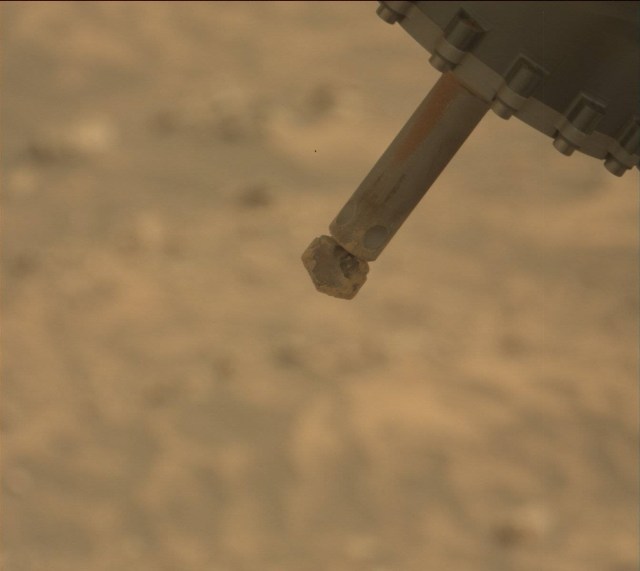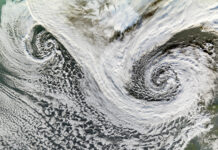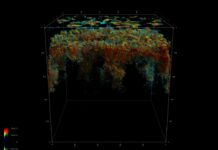Curiosity Rover’s Latest Achievements at Mammoth Lakes
NASA’s Curiosity Rover, a marvel of modern engineering, continues to make significant strides on Mars. Recently, the rover has been hard at work in an area known as Mammoth Lakes, and the latest update from the mission team highlights some exciting developments. Let’s delve into the details of Curiosity’s recent activities, the science behind its discoveries, and what lies ahead for this intrepid explorer.
A Productive Time at Mammoth Lakes
Curiosity’s mission team received the latest data from the Sample Analysis at Mars (SAM) instrument on Monday afternoon, July 3, 2024. The SAM instrument is designed to analyze the chemical composition of Martian soil and rocks. This information helps scientists understand the planet’s geology and assess its past habitability.
The team was thrilled with the analysis results from the Mammoth Lakes sample. After thorough examination, they concluded that the data gathered was comprehensive and satisfactory. This success paves the way for Curiosity to move on to its next target. The decision was made to clear out the drill assembly and use the rover’s robotic arm to collect close-up images and further chemical analyses of the drill tailings around the drill hole.
What Are Drill Tailings?
For those unfamiliar with the term, drill tailings refer to the fragments of rock and soil that are left behind after drilling. These tailings can provide valuable information about the subsurface composition of the drilled area. Curiosity’s Mars Hand Lens Imager (MAHLI) and Alpha Particle X-ray Spectrometer (APXS) instruments will be used to examine these tailings closely.
Remote Sensing Activities
Even though Curiosity has been stationed at Mammoth Lakes for several weeks, the area continues to offer new and intriguing features for exploration. The rover’s ChemCam (Chemistry and Camera Complex) will conduct Laser-Induced Breakdown Spectroscopy (LIBS) on a light-toned rock named "Finger Peaks" and a bumpy rock called "Glen Aulin." LIBS involves firing a laser at a target to vaporize a small amount of material and then analyzing the resulting plasma to determine its composition.
Additionally, Curiosity’s Mast Camera (Mastcam) will capture images of interesting geological features in the vicinity. One notable task will be creating a long-distance Remote Micro-Imager (RMI) mosaic of a target named "Rock Island Pass." These images and analyses will help scientists piece together the geological history of the area.
Environmental Monitoring
Curiosity’s mission plan also includes several environmental monitoring activities. These activities are crucial for understanding the Martian climate and weather patterns. By studying the atmosphere, scientists can gain insights into the planet’s past and present conditions, which is essential for future human exploration.
The Significance of Gediz Vallis Channel
This drill sampling campaign at Mammoth Lakes marks Curiosity’s first significant exploration after crossing into the Gediz Vallis channel. This channel is an area of particular interest because it may hold clues about the ancient water flow on Mars. Understanding the history of water on Mars is key to unraveling the planet’s potential for past life and its suitability for future human missions.
What’s Next for Curiosity?
With the successful completion of the Mammoth Lakes campaign, Curiosity is gearing up to move to its next location. The rover’s journey through Gale Crater and up the slopes of Mount Sharp has been nothing short of remarkable. Each new site offers fresh opportunities to uncover the secrets of Mars.
Curiosity’s mission is far from over. The rover continues to be a vital asset in NASA’s quest to explore the Red Planet. As it moves forward, scientists and engineers eagerly anticipate the new discoveries that await.
Reactions and Reviews
Curiosity’s achievements have garnered praise from the scientific community and space enthusiasts alike. Dr. Abigail Fraeman, a planetary geologist at NASA’s Jet Propulsion Laboratory, expressed her excitement about the rover’s progress. "It’s been a very productive drill sampling campaign here at Mammoth Lakes, our first after crossing into Gediz Vallis channel, and I’m excited to start getting ready to move on. What’s around the corner in this fascinating area of Mt. Sharp?" she commented.
Curiosity’s Legacy
Curiosity has been exploring Mars since its landing in August 2012. Over the years, it has provided invaluable data and stunning images of the Martian landscape. The rover’s discoveries have deepened our understanding of Mars and its potential to support life.
One of Curiosity’s most significant findings was the detection of organic molecules in Martian soil. These molecules are the building blocks of life, and their presence suggests that Mars may have had conditions suitable for life in the past. Additionally, Curiosity has found evidence of ancient water flow, including riverbeds and lakebeds, further supporting the idea that Mars was once a wetter and potentially habitable planet.
Technical Jargon Explained
For those new to the world of space exploration, here are some key terms explained:
- SAM (Sample Analysis at Mars): An instrument on Curiosity designed to analyze the chemical composition of Martian soil and rocks.
- MAHLI (Mars Hand Lens Imager): A camera on Curiosity’s robotic arm that takes close-up images of rocks and soil.
- APXS (Alpha Particle X-ray Spectrometer): An instrument that analyzes the elemental composition of Martian rocks and soil.
- ChemCam (Chemistry and Camera Complex): A set of instruments on Curiosity that includes a laser for analyzing the composition of rocks and soil.
- LIBS (Laser-Induced Breakdown Spectroscopy): A technique used by ChemCam to determine the composition of a target by analyzing the plasma generated by a laser.
- Mastcam: Curiosity’s main camera system, which captures high-resolution images of the Martian surface.
- RMI (Remote Micro-Imager): A part of ChemCam that takes detailed images of distant targets.
Good to Know Information
Curiosity’s mission is part of NASA’s broader Mars Exploration Program, which includes other missions like the Mars Perseverance Rover, Mars Sample Return, and MAVEN (Mars Atmosphere and Volatile EvolutioN). Each mission has its unique objectives, but together, they contribute to our understanding of Mars and its potential for supporting life.
Curiosity’s journey has been a testament to human ingenuity and the spirit of exploration. The rover’s ability to operate in the harsh Martian environment and send back valuable data is a remarkable achievement. As we look to the future, Curiosity’s legacy will continue to inspire new generations of scientists and engineers to reach for the stars.
Conclusion
Curiosity’s latest achievements at Mammoth Lakes highlight the rover’s ongoing contributions to Mars exploration. The successful analysis of the Mammoth Lakes sample and the subsequent remote sensing activities demonstrate the rover’s capabilities and the dedication of the mission team. As Curiosity prepares to move to its next location, we can look forward to more exciting discoveries on the Red Planet.
Stay tuned for more updates on Curiosity’s journey and the latest developments in Mars exploration. For those interested in learning more about Curiosity and other Mars missions, NASA’s website offers a wealth of information, including mission overviews, science updates, and stunning images from the Red Planet.

































